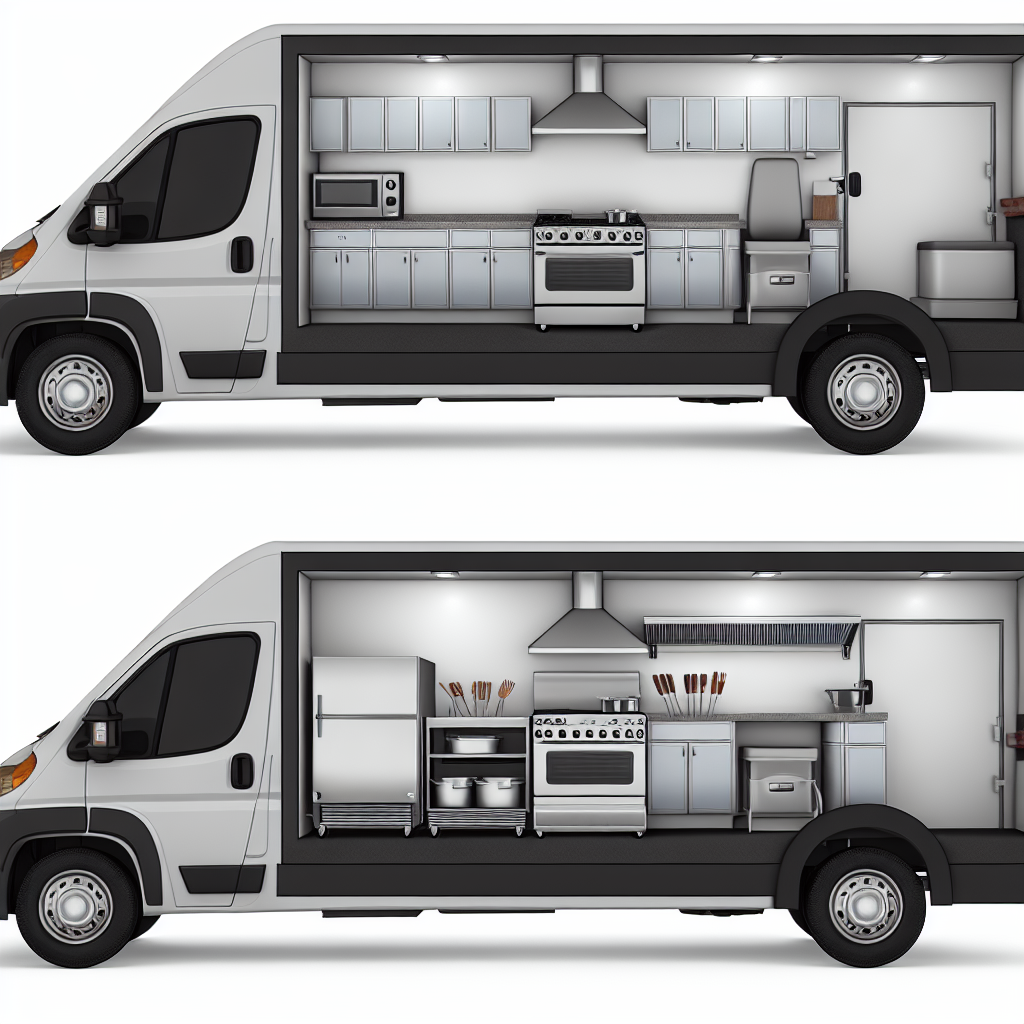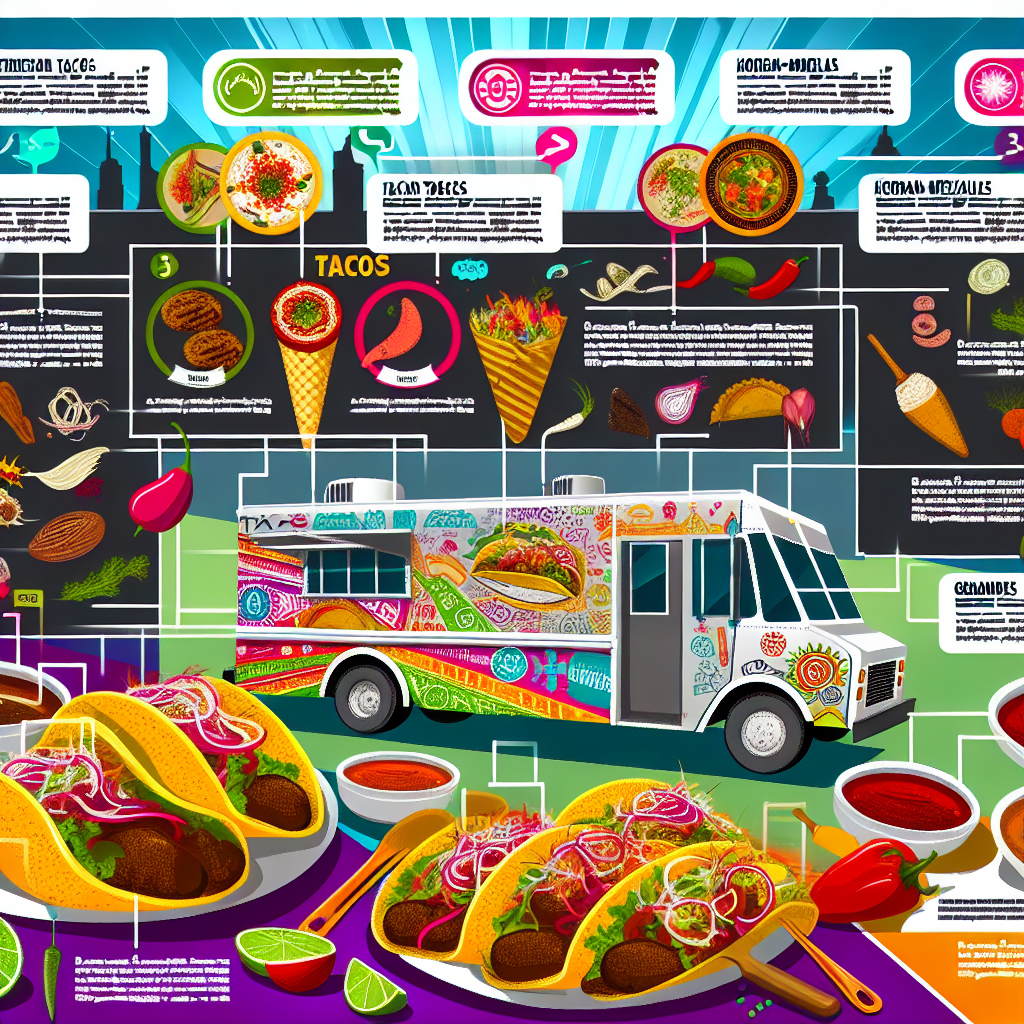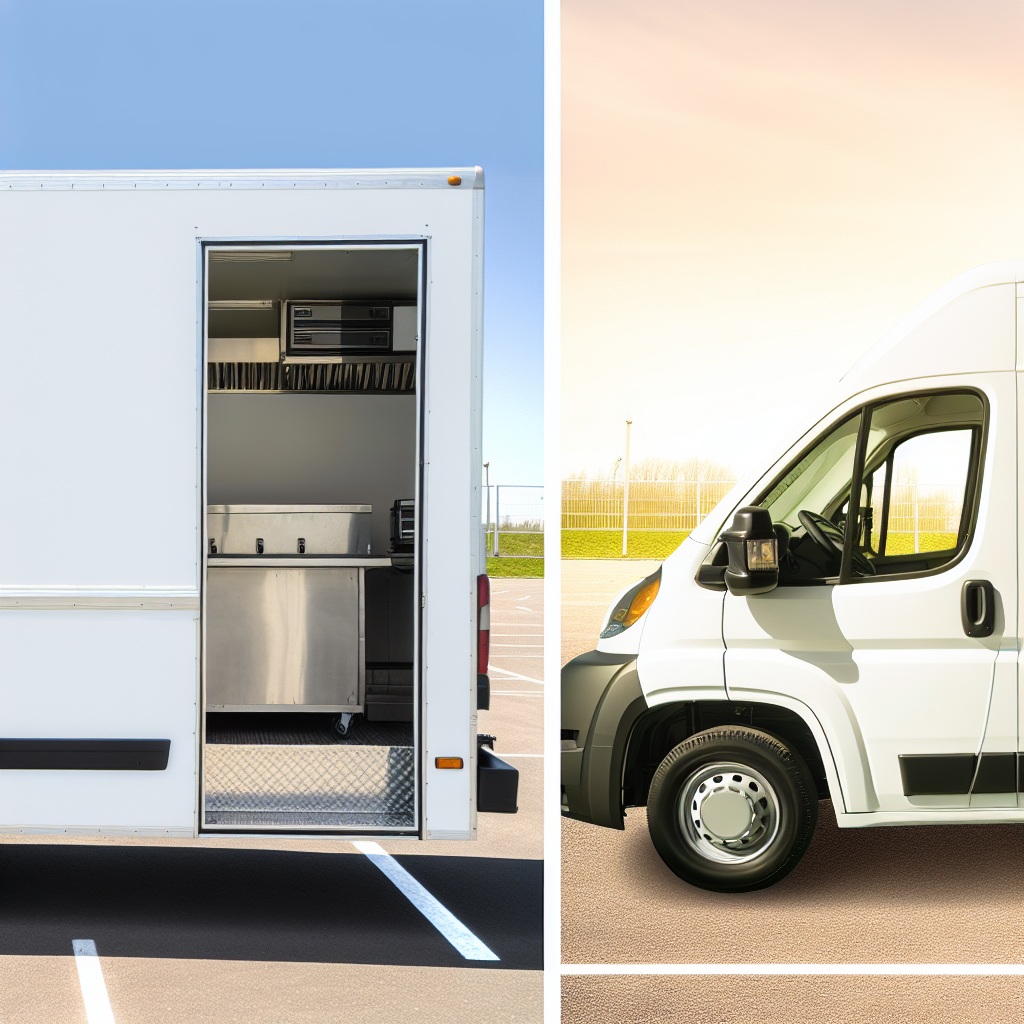In recent years, food trucks have become highly popular, especially in the vibrant sector of Latino cuisine. This trend offers culinary entrepreneurs a unique way to showcase their flavorful dishes. As potential food truck owners enter this dynamic industry, one key decision they face is choosing the right vehicle. The two most common options are step vans and cargo vans, each with distinct benefits.
Step vans are often preferred for their spacious configurations and easy maneuverability, making them well-suited to various menu needs. In contrast, cargo vans provide versatility at a more affordable price. Understanding these vehicle differences is crucial for vendors aiming to succeed in the competitive food truck market, particularly as they explore diverse food truck models aligned with their culinary goals and operational requirements.
Advantages of Step Vans Over Cargo Vans
When it comes to food trucks, the vehicle you choose significantly affects your operational efficiency and overall success. Step vans provide several advantages over traditional cargo vans, particularly in terms of space requirements for food prep and storage.
- Increased Interior Space: Step vans are designed with a larger interior, offering ample room for kitchen equipment, food storage, and prep areas. This is especially crucial for food trucks serving diverse menus that require more specialized equipment.
- Optimized Workflow: With more space to maneuver, cooks can work more efficiently, minimizing the risk of accidents and allowing for a smoother workflow during busy service hours.
- Better Storage Options: Step vans come equipped with more storage options, enabling foodpreneurs to stock up on ingredients without needing to make frequent restocking trips. This flexibility can be essential during peak hours or events.
- Customization Potential: The layout of a step van can be customized to meet specific business needs better than a cargo van, accommodating different types of cooking equipment and storage solutions.
Citing a pertinent quote, “Your menu determines the equipment you’ll have to have, as well as how much space you need for food prep and storage.” This highlights the importance of selecting a step van to ensure you have the necessary space to accommodate all your culinary needs and equipment, especially as your menu evolves.
Ultimately, investing in a step van can provide the extra space and efficiency required to elevate your food truck operation to the next level.
Food Truck Statistics in the U.S.
As of 2023, the food truck industry in the United States has seen considerable growth and evolution. Currently, it is estimated that there are approximately 36,000 to 48,400 food trucks in operation across the country. This number highlights the increasing popularity and demand for mobile food services, particularly as consumers seek diverse culinary experiences.
The industry valuation stands at about $1.32 billion and is projected to escalate to $2.29 billion by 2032, showcasing a robust annual growth rate of 6.3% during this forecast period. In terms of revenue, the average food truck generates around $346,000 annually, illustrating the potential profitability of this business model.
Moreover, the industry provides employment for over 63,000 individuals, contributing significantly to local economies.
Step vans and cargo vans play a critical role in this expanding market; step vans, with their larger cargo areas, are frequently favored for food truck conversions due to their capacity to accommodate diverse cooking equipment and storage needs. The versatility and spaciousness of these vehicles make them vital assets for aspiring food truck entrepreneurs.
Vendor Testimonial
Testimonial from Luis, Owner of “Sabor Latino” Food Truck:
As a passionate vendor specializing in traditional Latino dishes, I’ve been running my food truck, “Sabor Latino,” for over five years. I started with a cargo van that served me well initially, but I quickly realized it wasn’t cutting it when it came to space and efficiency.
My cargo van was cramped, making it difficult to cook and serve at peak times; for instance, I struggled to fit all my necessary equipment, especially when I wanted to introduce popular dishes like tacos al pastor or pupusas to my menu. The limited space meant I frequently had to shuffle things around, and the disorganization affected my service speed, leaving customers waiting longer than I wanted.
Determined to improve my operations, I researched and decided to invest in a step van based on the recommendations of other food truck owners. The transition was a game changer. The step van offered me almost twice the space, allowing for a more organized kitchen layout. I could fit all my cooking equipment, including a larger grill and fryer, without compromising on space.
With this additional space, I was able to expand my menu and serve my customers more efficiently. I saw a noticeable decrease in wait times, which boosted my customer satisfaction. Now, I can prepare more dishes simultaneously, cater to larger crowds, and even offer special items during local festivals.
Choosing a step van not only improved my food truck’s efficiency but also elevated my business. I encourage anyone in the Latino cuisine business to consider the benefits of a step van; it truly makes a difference.
| Food Truck Model | Type | Interior Space (sq ft) | Price Range | Ideal For | Budget Constraints |
|---|---|---|---|---|---|
| Chevrolet P30 | Step Van | 200+ | $30,000 – $100,000 | Diverse Menus | High |
| Freightliner MT45 | Step Van | 220+ | $50,000 – $120,000 | High Volume Foods | High |
| RAM ProMaster | Cargo Van | 150+ | $30,000 – $50,000 | Varied Menus | Moderate |
| Ford Transit | Cargo Van | 130+ | $44,000 – $55,000 | Street Foods | Moderate |
| Diamond Cargo Trailers | Trailer | 200+ | $6,000 – $8,000 | Limited Equipment | Low |
Key Takeaways
- Space Requirements: Step vans generally offer more interior space, making them suitable for varied menus requiring extensive kitchen equipment.
- Price Points: Step vans tend to be more expensive, appealing to those with higher budgets focused on extensive offerings.
- Budget Options: Cargo vans and trailers serve as more budget-friendly options for startups with limited capital, suitable for simpler menus.
Understanding your budget constraints and space requirements is essential when selecting a food truck model. This evaluation can significantly impact your operational efficiency and menu offerings.

Budget Considerations When Choosing Between Step Vans and Cargo Vans
Deciding between step vans and cargo vans for your food truck venture involves more than just assessing space and equipment needs; budget considerations are equally crucial. Here are some key pricing facts and considerations to help guide your decision:
- New Step Vans: Typically, new step vans can range in price from $30,000 to over $100,000. This wide range usually reflects factors such as brand, model, and additional customizable features.
- Cargo Vans: In contrast, new cargo vans like the Ford Transit and RAM ProMaster are generally more budget-friendly, costing around $46,000 and $44,000 respectively. This makes them more accessible for startups or vendors looking to minimize initial investment.
- Trailers: For those starting with a smaller or simpler operation, small trailers can be a cost-effective alternative, priced at less than $6,000. Even larger 24-foot trailers can be obtained for around $8,000.
Here are some additional points to consider when budgeting:
- Operational Costs: Consider long-term operational costs, such as fuel efficiency, maintenance, and insurance, which are critical for the total cost of ownership.
- Financing Options: Investigate financing options available for both step and cargo vans. With various loans and leasing options, it’s possible to find a deal that meets your financial capabilities.
- Resale Value: Factor in the expected resale value of the vehicle. Step vans might retain value due to their adaptability for various food truck needs, while cargo vans may have a broader appeal for multiple uses.
- Customization Expenses: Keep in mind that additional customization to tailor the vehicle to your operational needs can also impact your budget significantly.
Understanding these budget considerations is essential for making an informed decision that aligns with your culinary ambitions and financial constraints.
Menu Types for Food Trucks
Choosing the right menu is one of the most critical aspects of operating a successful food truck. The type of food being served impacts not only customer appeal but also dictates the requirements for kitchen space and the choice of vehicle. Here are some common menu types and the implications for food truck operations:
-
Limited Menus
This approach focuses on a small selection of 5-12 well-curated dishes. Limited menus allow food truck operators to perfect their offerings, ensuring quick service—typically under five minutes per order. This simplicity not only decreases food waste but also simplifies staff training and reduces the complexity of kitchen operations. For such menus, compact vehicles like cargo vans are often sufficient, providing adequate space for essential equipment without the burden of excessive space.
-
Extensive Menus
Food trucks offering extensive menus may feature 20 or more items, covering multiple categories. This variety appeals to a larger customer base but requires considerable kitchen space and equipment. The versatility needed for preparation and cooking necessitates vehicles like step vans, which typically provide more room for extra cooking tools and storage. However, with a more extensive menu, food truck owners must consider the challenges of maneuverability, especially in busy urban areas.
In the journey of building a successful food truck business, it’s essential to keep in mind that, “If you cast a wide enough net, you just might find a gently used step van at a great price.” This flexibility in vehicle choice, driven by the menu, can significantly enhance operational efficiency and customer satisfaction.
Aligning menu offerings with the appropriate vehicle type sets the foundation for a thriving food truck enterprise.
Conclusion
In conclusion, selecting the right truck for your Latino cuisine venture involves careful consideration of several critical factors, including space, budget, and menu types. Step vans typically offer more interior space, making them ideal for expansive menus that require additional kitchen equipment. They do, however, come at a higher price point, often ranging from $30,000 to over $100,000. On the other hand, cargo vans provide a more budget-friendly option for startups, typically costing around $44,000 to $50,000, but might limit your operational efficiency depending on your menu needs.
As you weigh your options, remember to evaluate your specific culinary requirements and business goals. An extensive menu may necessitate investing in a larger truck, while a limited selection could be effectively served from a smaller, more economical vehicle. Additionally, consider exploring food truck financing options that can ease the financial burden of your investment.
Ultimately, investing time in research and reflection before making a purchase will ensure that your choice aligns with your vision for your mobile food business and that it effectively caters to your target market. Good luck on your exciting journey into the culinary world!
Recent Food Truck Trends in Latino Cuisine and Vehicle Preferences
The food truck industry has experienced remarkable growth, particularly in the realm of Latino cuisine, impacting the choices that vendors make regarding their vehicles and operations. Here are some key trends:
- Popularity of Latino Cuisine:
Mexican dishes dominate the food truck landscape, comprising approximately 8% of all food trucks. Tacos remain a crowd favorite, accounting for over a quarter of food offerings. This trend emphasizes the need for food trucks to accommodate quick service and efficient preparation methods. - Fusion Food Offerings:
Vendors are creatively blending culinary traditions, leading to the rise of fusion dishes like Korean-Mexican tacos. This innovation attracts a diverse clientele and often necessitates vehicles that can support complex kitchen equipment and ample prep space. - Authenticity and Gourmet Dishes:
Consumers are increasingly favoring authentic and upscale Latino dishes, driven by the rich cultural heritage brought by immigrants. This trend boosts demand for food trucks that can serve high-quality ingredients in unique culinary presentations. - Sustainability:
Eco-friendly practices are becoming a focal point, with many vendors turning to sustainable packaging and incorporating solar-powered systems. A significant 78% of consumers prefer food trucks that prioritize environmental responsibility, affecting vehicle choices and operational strategies. - Technological Integration:
Modern food trucks are now equipped with technology that facilitates efficient operations, including mobile ordering platforms and contactless payment methods. The right vehicle must support these tech advancements, so vendors are selective in their purchases to enhance their customer service experience.
These trends highlight the dynamic nature of the food truck industry, where the culinary offerings and strategic vehicle customization are essential for meeting consumer expectations and achieving success in a competitive market.
These advantages, particularly in maximizing space and enhancing operational efficiency, not only facilitate successful day-to-day operations but also align with the burgeoning food truck market, revealing its significant growth potential.

This image visually represents the food truck industry trends and statistics, showcasing growth and potential in the market.

An infographic illustrating the popularity of Latino dishes served from food trucks, emphasizing key offerings like tacos and fusion dishes.

